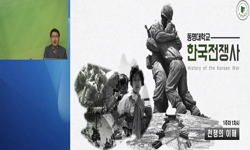This paper investigates the socio-historical characteristics of the culture centers that were established countrywide beginning with the Ganghwa Culture Hall after the liberation of Korea. The Culture Center is a propaganda machinery of the American c...
http://chineseinput.net/에서 pinyin(병음)방식으로 중국어를 변환할 수 있습니다.
변환된 중국어를 복사하여 사용하시면 됩니다.
- 中文 을 입력하시려면 zhongwen을 입력하시고 space를누르시면됩니다.
- 北京 을 입력하시려면 beijing을 입력하시고 space를 누르시면 됩니다.

문화냉전의 지역성 -대전문화원의 활동을 중심으로- = Locality of the Cultural Cold War : Focusing on the activities of Daejeon Culture Center
한글로보기https://www.riss.kr/link?id=A107799992
- 저자
- 발행기관
- 학술지명
- 권호사항
-
발행연도
2018
-
작성언어
-
- 주제어
-
KDC
900
-
등재정보
KCI등재
-
자료형태
학술저널
-
수록면
123-154(32쪽)
- DOI식별코드
- 제공처
-
0
상세조회 -
0
다운로드
부가정보
다국어 초록 (Multilingual Abstract)
This paper investigates the socio-historical characteristics of the culture centers that were established countrywide beginning with the Ganghwa Culture Hall after the liberation of Korea. The Culture Center is a propaganda machinery of the American culture opened by active support from the United States Information Service (USIS) in Korea, which oversees foreign public affairs for the United States. The centers have increased in number upon taking the Korean War as an opportunity. These centers held exhibitions, public lectures, and film screening based on anticommunism for the Korean residents with a purpose of creating “Free East Asia,” as pursued by the USIS.
After the Korean War, culture centers focused on activities developing anticommunism, hired employees, formed programs, and developed close relationships with regional administrations, police forces, education institutes, and even show proprietors who owned/managed commercial movie theaters. The Korean Culture Center Federation established after May 16 military coup in 1961 secured nationwide network and participated in the propaganda and publicity of American-style democracy and culture, and the industrialization and modernization led by Park Chung-hee.
To identify the specific aspects of locality during the cultural cold war, this paper analyzed the targets, regions, and the programs of movie tour activities conducted by the Daejeon Culture Center in Daejeon, Chungnam during the 1960s. From the analysis, it was identified that the activities of the culture center in Daejeon that switched to a rear military city after the Korean War had close relationships with the civil affairs and psychological warfare of the US military. Moreover, the paper claims that the locality of the Daejeon Culture Center’s activities in Korea is not separated from the locality of all Korean cultural centers’ activities but overlapped in terms of East Asian countries in the Cold War era.
동일학술지(권/호) 다른 논문
-
1950년대 말 아시아재단 서울지부의 연구 지원 사례연구 -고황경·이만갑·이효재·이해영의 『한국농촌가족의 연구』를 중심으로-
- 인하대학교 한국학연구소
- 심혜경 ( Sim Hye-kyong )
- 2018
- KCI등재
-
제 29차 도쿄 국제펜대회(1957)와 냉전문화사적 의미와 지평 -1950년대 후반 미국 문화원조와 동서문화교류 담론을 중심으로-
- 인하대학교 한국학연구소
- 박연희 ( Park Yeon-hee )
- 2018
- KCI등재
-
『황성신문(皇城新聞)』의 ‘시평(時評)’ 연구 -「비설(飛屑)」, 「국외냉평(局外冷評)」을 중심으로-
- 인하대학교 한국학연구소
- 반재유 ( Ban Jae-yu )
- 2018
- KCI등재
-
2000년대 중국의 유교부흥 현상 분석 -의미와 문제점-
- 인하대학교 한국학연구소
- 조경란
- 2018
- KCI등재




 KCI
KCI KISS
KISS






